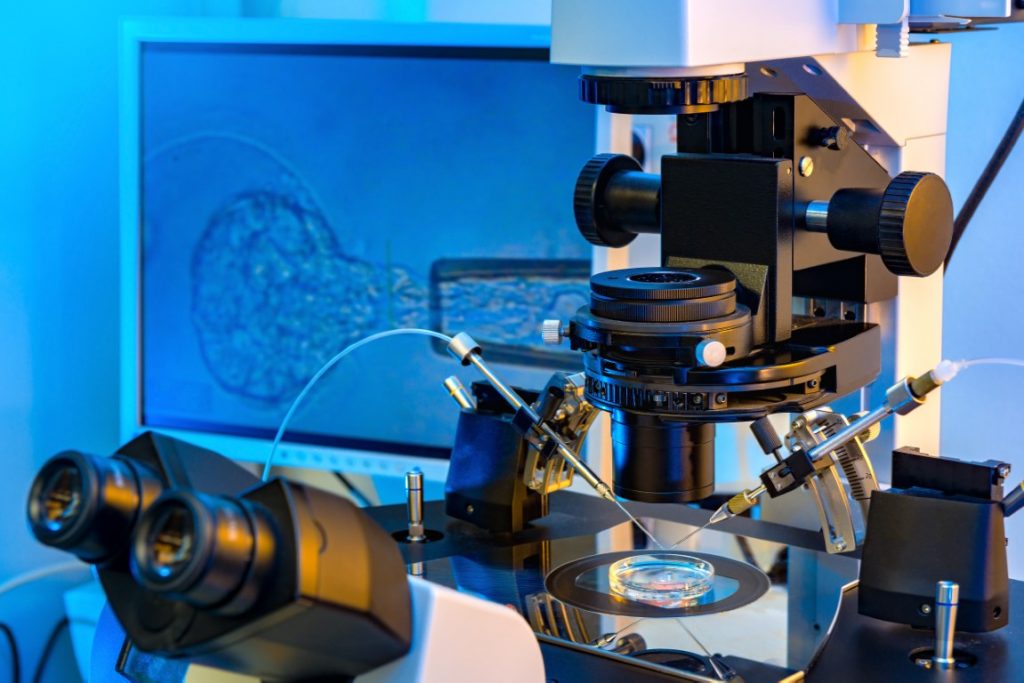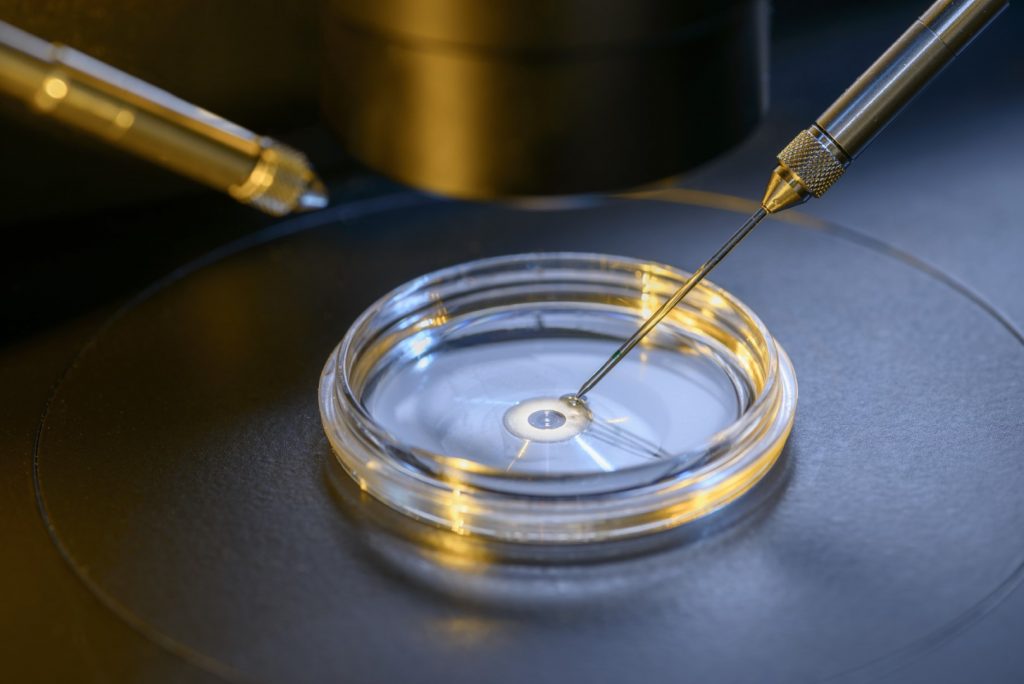IVF – In Vitro Fertilization
The more experience one has – the better the results
Family and parenthood are fundamental to Israelis’ tradition and way of life. This explains the operation of more than 20 IVF units in Israel, a country with a population of less than nine million. Hundreds of highly skilled professionals yearn for children and are committed to fulfilling the goal of having progeny. In fact, we are actually one of the world leaders, both in the number of treatment cycles per capita/per annum, as well as in success rates. Over 40% of fresh embryos and 30% of thawed embryos that are transplanted result in pregnancies, all contingent on a number of factors, including the woman`s age, and the sperm quality. Israeli results count among the top five in the world! This is no surprise, as the more experience one has, the better the results.


The Miracle of Reproduction
IVF is the major technology for treatment of infertility which has brought happiness to scores or thousands, not both of childless couples over the past thirty years since its implementation by the British investors/inventors Steptoe & Edwards.
In vitro fertilization (IVF) is implemented when other methods of assisted reproductive treatment have been unsuccessful, in cases of either male or female infertility. Egg cells (ova) are recovered from the woman`s ovaries after ovarian stimulation, and are then fertilized by sperm outside the woman`s uterus, in the lab. A day later, the fertilized eggs – FRESH EMBRYOS – that have properly developed, are transferred to the future mother`s womb with the aim of establishing a successful pregnancy. 10-12 days subsequent to the re-implantation a quantitative bHCG blood test will hopefully result positive. Since several egg cells are fertilized during the process, in many cases some are kept frozen in liquid nitrogen for many years, to be thawed when the family wishes to expand, or if the initial transfer failed.
Once pregnancy is attained and safely past the end of the first trimester, it is treated as any other pregnancy, although the baby is deemed “very precious”, due to the complicated procedure, following years clouded with numerous disappointments and frustration. In some instances, since more than one embryo was transplanted, a multiple pregnancy ensues. Occasionally, if required and at the couple`s request, in cases of triplets or more, the specialists may recommend reducing the number. Fetal reduction, leaving just two embryos to continue to develop, improves their chances of arriving safely to birth after full-term pregnancy, but creates a new risk – premature delivery or even abortion. To avert these risks, in some countries (the UK for instance) only two embryos are re-planted by law. We do not have such a law, but couples can always consult with the professional personnel to decide on the number of transplanted embryos.
Further professional details
ICSI – Intracytoplasmic Sperm Injection
In cases of impaired sperm morphology and/or motility, a newly developed micromanipulation technique – ICSD – is now available. Under a high power microscope the slow sperm is led directly into the egg cell. This method is a huge break-through in the treatment of male infertility, facilitating pregnancies that were heretofore impossible to achieve. Sperm is currently retrieved even in cases of aspermic ejaculate – a complete lack of sperm cells in the ejaculated fluid, either from the sperm ducts, or directly from a testicular biopsy (tissue sample). In fact, we take pride in the fact that an Israeli team, headed by Prof. Shlomo Mashiach, one of the leading researchers in the field of infertility, has achieved the world’s first pregnancy from testicular tissue! Once retrieved, one sperm is used in each ICSI and the rest are kept in deep freeze for additional trials if and when needed. ICSI is a procedure conducted by specially trained and highly skilled doctors, using extremely expensive ultra-modern equipment.

ZIFT - Zygote Intra-Fallopian Transfer
Deemed the most invasive infertility treatment, zygote intrafallopian transfer (ZIFT) is the choice of less than one percent of individuals who access assisted reproductive technology. the method can work effectively for some couples — more than 1,000 ZIFT babies are born each year. ZIFT involves invasive procedures, such as deep sedation or general anesthesia and laparoscopy – a surgical technology implemented to plant the zygotes into the tubes, located deep in the lower abdomen. But when everything else has been attempted and failed, the embryos are transplanted directly into the fallopian tubes, with significant success rates. Some of Israel’s leading teams in this field also figured among the pioneers who were the first who dared to employ this technique.


